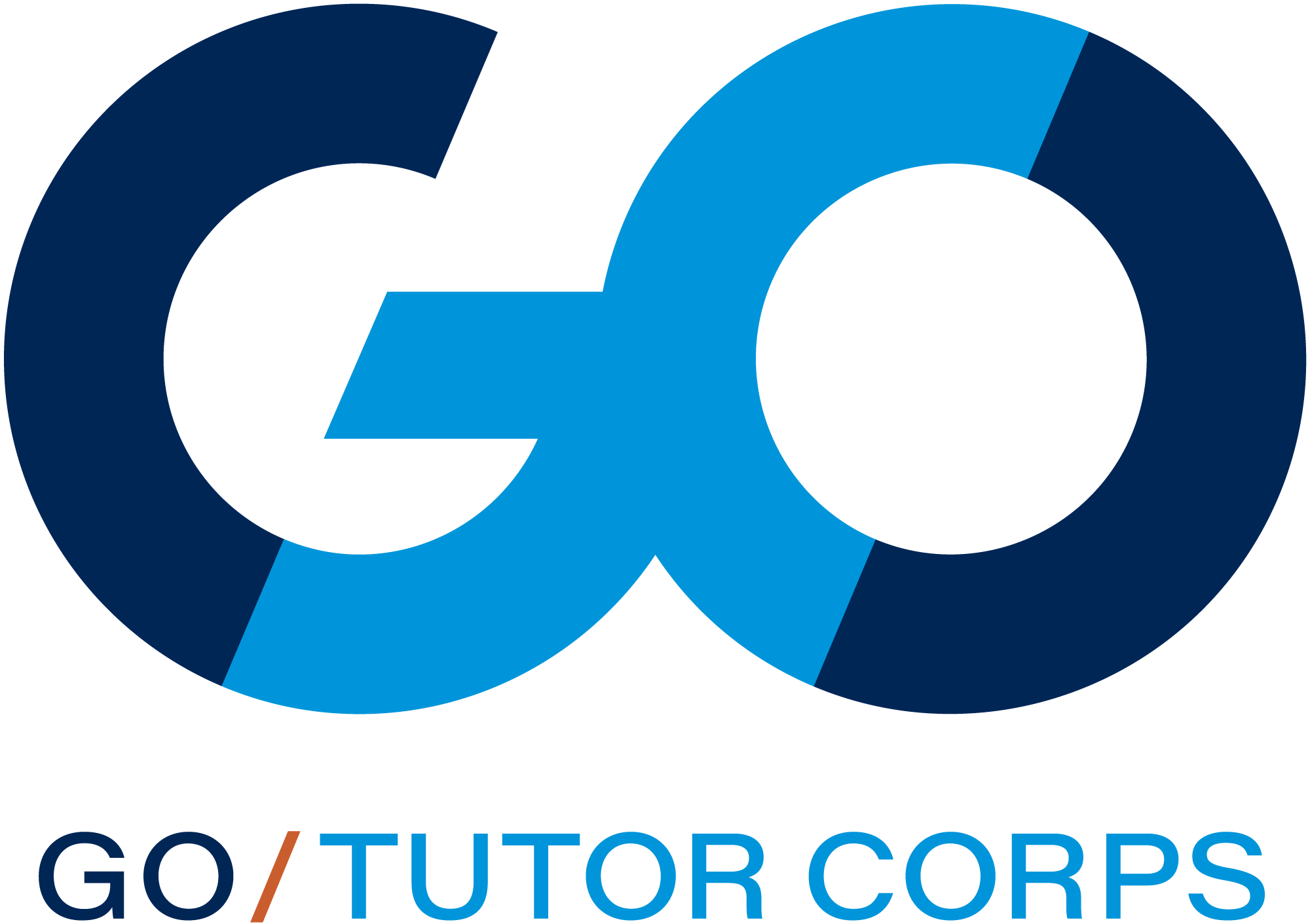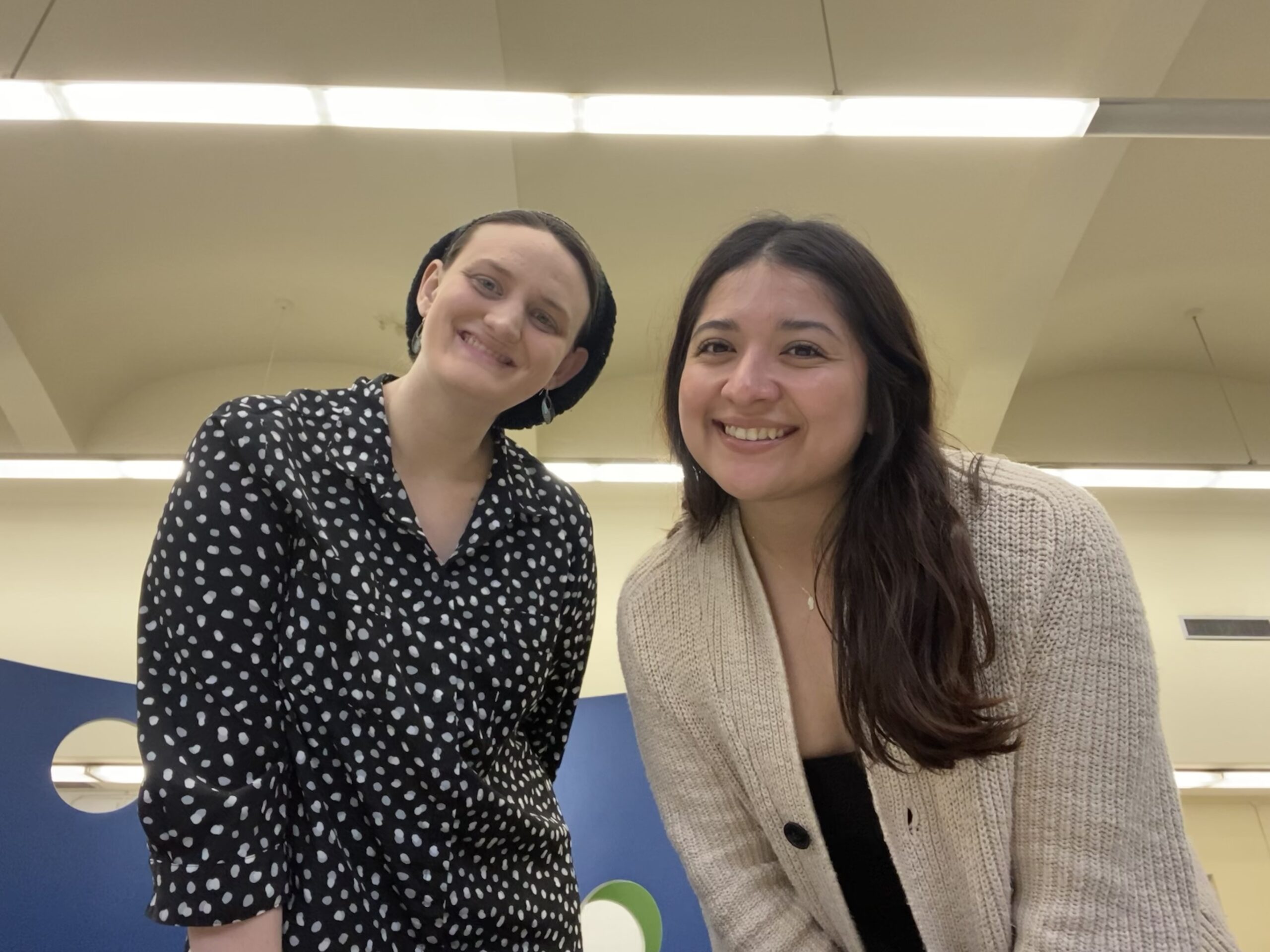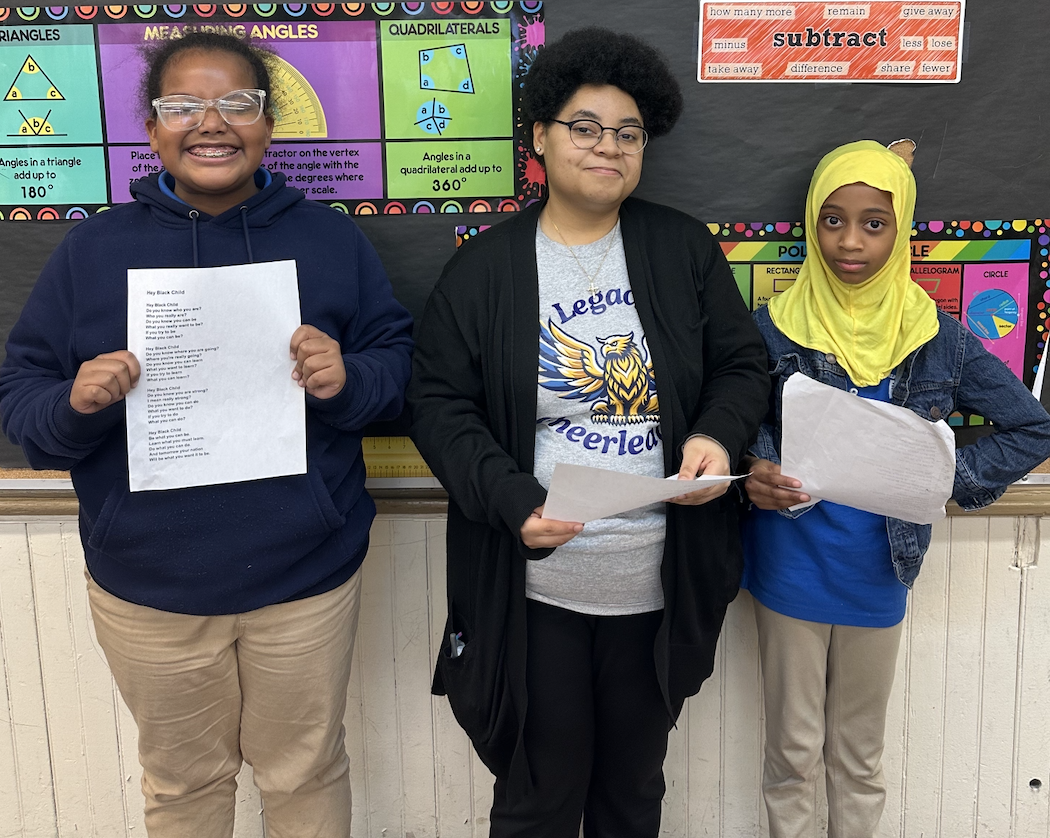Thank you for your interest in the GO Tutor Corps! If you have questions about our AmeriCorps Fellowship program, GO partners, or about GO Tutor Corps itself, please use the form below to get in touch.
Why Tutoring is my New Passion, after 40 Years as a Teacher

November 2025
Deborah White
After retiring in 2020, I suddenly had a lot of available time. And I still felt the need to help others. So after 40 years of teaching math, I thought I could pivot to tutoring. A lot of what I did was really tutoring, structuring the classroom to maximize working with individual students.
Job searches are very different from back in the day! I learned about LinkedIn and other sites. I received an email about GO Tutor, and while reading the job description I realized it was what I’d been looking for. The clincher was when it mentioned asking the students what their pronouns are. Inclusivity was the theme of their mission statement.
So what is tutoring? Is it more or less the same as teaching? There is a lot of overlap: In fact, tutor lists teacher as a synonym, and teacher lists tutor as a synonym. Pretty cozy. But we know they’re not the same, even if you disregard the difference between the size of the group one typically tutors and the size one typically teaches.
Teachers take students through a prescribed curriculum. Their job is to break the material up into appropriate bite-sized pieces so the students could learn what they were supposed to. And then their job is to figure out how to explain it to people who are possibly hearing it for the first time. When I taught Multivariable Calculus the first time, I had to get up at 4 a.m. each morning to prepare. First I would do the problems; then I would figure out how I had done them; finally I figured out how to explain how to do them.
And if you’re a good teacher, a lot of what you do should be tutoring. Although the word itself originated from the idea of a protector, it has evolved into being a private teacher (that word again), and if you structure your class right and get students to work together, you can circulate (virtually or in-person) and pretty much work one-on-one.
The thing is, math and language concepts are not instantly mastered. They come and go. They have to be reviewed and reworked. Students need to look at how a certain problem was solved and then adapt it to the current problem. Picking up on what the student needs to brush up on is the domain of the tutor. Do they sound hesitant? Are they making a consistent mistake? Speaking of mistakes, my belief is that you usually have to make all of them before you can get the problems right. You have to try something and see if it leads you anywhere. And the tutor can be instrumental in this, praising a student for thinking to try something, even if it didn’t help.
So which do I prefer? No contest: tutoring. Because when you’re a teacher, you’re basically telling people what to do, i.e. bossing them. And even if it’s for their own good, you’re still giving orders. Not my cup of tea! I mean, I did it for all those years, but it never sat easy. Even with my own kids, if I gave what I thought was an order, they treated it like a suggestion.
As a tutor, you have an infinite number of possible responses when a student is stuck, and you need to sort through them quickly.
Here are some possibilities for math tutoring:
Express empathy. “I know how hard this one is, but maybe if we go step by step you’ll see how to get there.”
Suggest the next step. “I would start by doing _______. Why don’t you try and see if it helps?”
Start a diagram. If appropriate, begin making some sort of illustration that can suggest an approach. Not always possible, but… For instance, if a student really balks at dividing 24 by 3, I suggest that they make 24 dots, circle groups of 3, and then count how many groups they made.
Propose a similar problem. “Here, try this one. I’ll work through it with you, and then you can use it as a model for doing the one you’re working on now.”
If they completed a problem but got it wrong, there are a couple of effective approaches. See if they can find their error. “Take a look back at your work and see if you can find a mistake. That’s the best way of ensuring that you’ll never make that mistake again!”
Ask them to rework the problem and compare their solutions. “Don’t look at your first try; just do it again and see if you get a different answer.”
For ELA tutoring, I’ve found that asking the students to read aloud what they’re working on is helpful, as well as asking them if they can rephrase what they’re reading. The goal is to get them to look closely at words and sentences.
And no matter what subject you’re tutoring, as a tutor your first option should always be praising the student. Many students have had a discouraging time in math and language classes and need to be made to believe they can succeed. I try to avoid outright lies when praising a student, but I’ve gotten very good use out of saying, “Wait. You told me you weren’t good at math [or ELA]. You expect me to believe that?” I have seen visible swelling of pride afterwards.
I’m just beginning here at GO Tutor Corps, but I see my students’ growth and my own, and this inspires me to keep at it.






